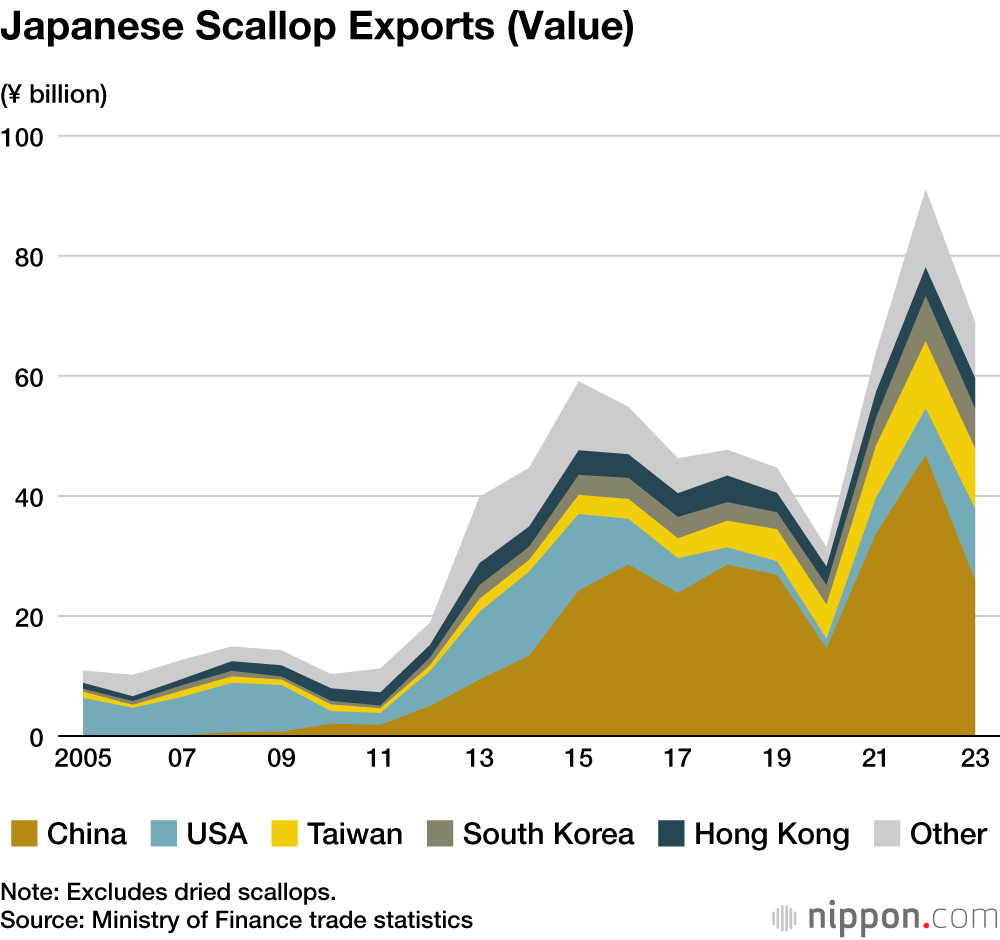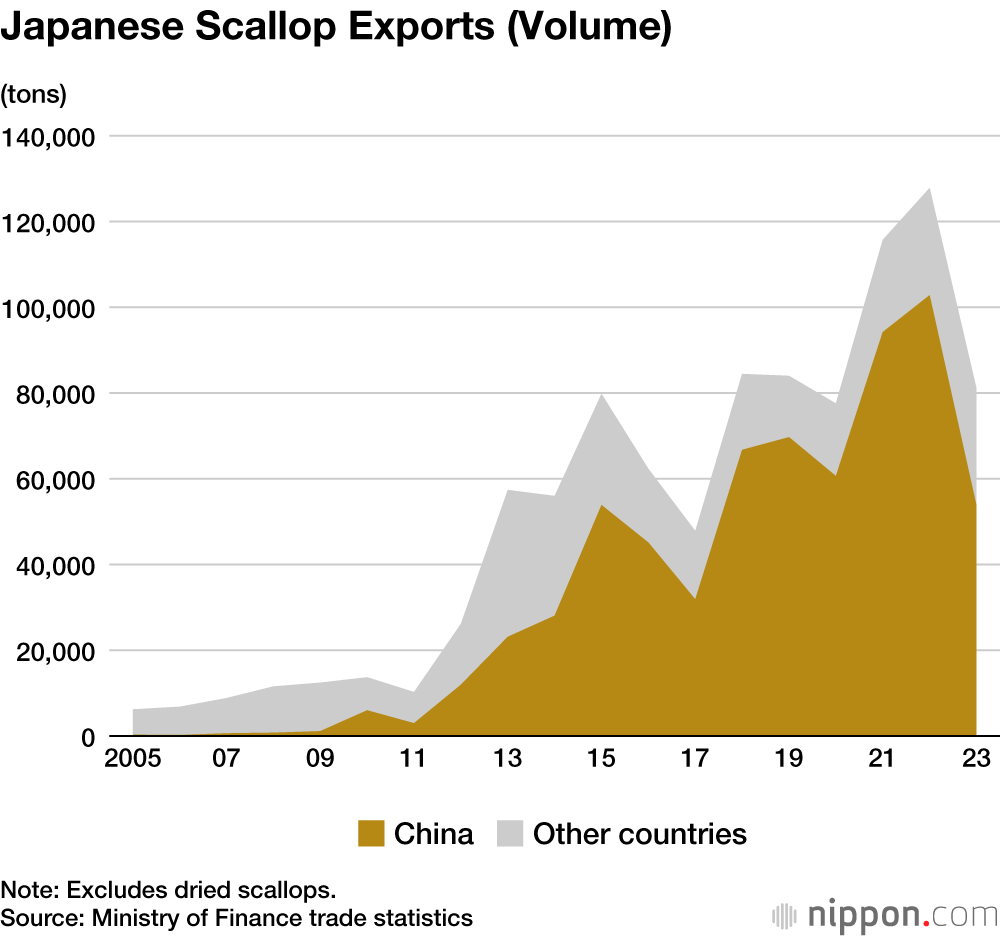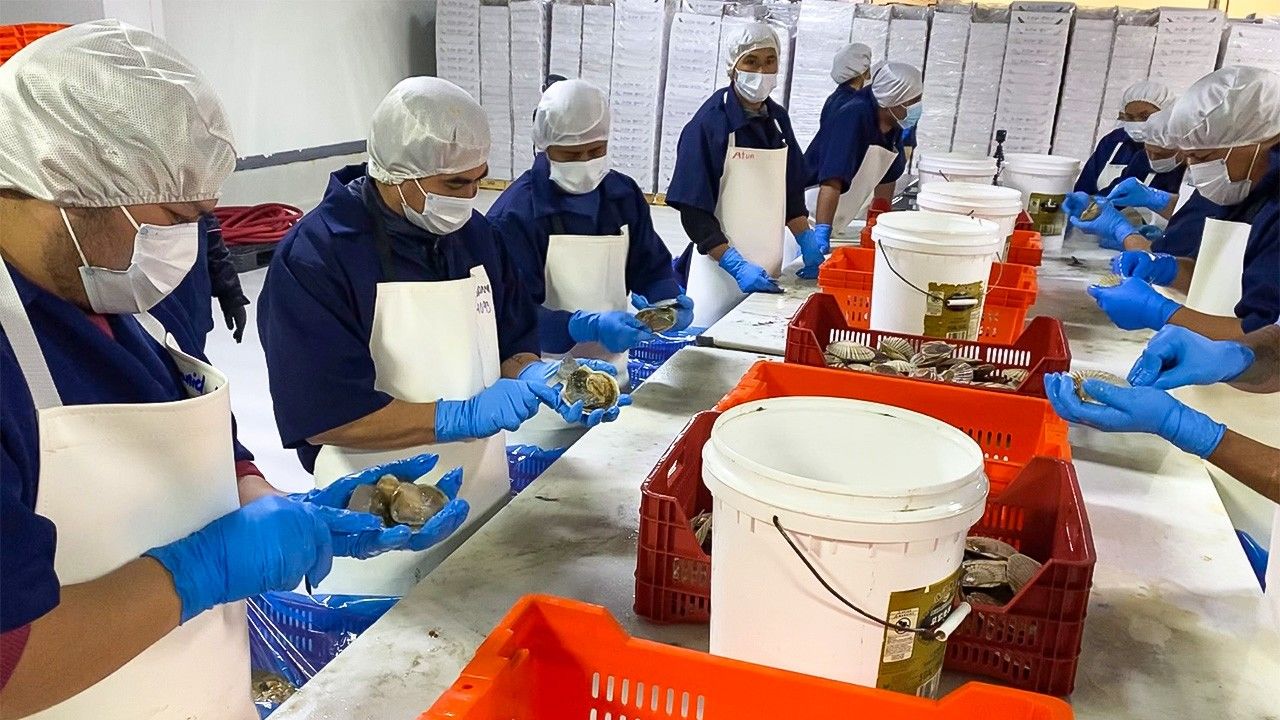
Scallop Producers Consider Shifting Processing to Mexico in Response to China Ban
Economy Food and Drink World- English
- 日本語
- 简体字
- 繁體字
- Français
- Español
- العربية
- Русский
When the Chinese government decided to ban the importation of Japanese seafood, it destroyed overnight not only the Chinese market for Japanese scallops but also Japan’s scallop supply chain (Japanese scallops used to be processed in China before being re-exported). To reduce their reliance on China, Japanese seafood producers are trialing an arrangement in which scallops destined for the US high-end market are processed in Mexico.
Overreliance on China Backfired
In August 2023, the Chinese government hardened its stance on the Tokyo Electric Power Company’s decision to discharge radioactive tritium into the sea at the site of the Fukushima Daiichi Nuclear Power Station, and imposed a total ban on Japanese seafood. The scallop industry, whose largest importer was China, was hit particularly hard.
In 2023, the volume of Japanese scallops exported to China fell 47.7% on the previous year to 53,700 metric tons, with revenue falling 44.6% to ¥25.9 billion. As a result, the value of Japan’s global scallop exports fell 24.4% (36.6% by volume).
Most of the Japanese scallops that were exported to China were ultimately destined for the US market. Frozen, unprocessed scallops were sent to China, where labor is cheaper, for processing, before being refrozen and sent to the United States. Processing is necessary because unprocessed bivalves cannot be imported into the United States for hygiene reasons. However, as US Customs and Border Protection takes the view that this kind of processing (the removal of the adductor muscle and refreezing) is not significant enough to constitute a change in the scallops’ country of origin, they were still labelled “Product of Japan.” This arrangement made the industry increasingly reliant on China for scallop processing. While this supply chain, which saw 80% of Japanese scallops being exported to China, was efficient, insufficient awareness of the need to hedge risk meant that the Chinese ban destroyed the business overnight.
Pivoting to Mexico
The Japan External Trade Organization turned its eyes to Ensenada in the Mexican state of Baja California as an alternative center for scallop processing. Situated 100 kilometers south of the border town of Tijuana, Ensenada is home to one of the largest concentrations of seafood processing operators in Mexico. The area is known for oyster, abalone, and mussel farming, and also boasts a large workforce of experienced shuckers. The good reputation of Ensenada seafood in the United States was also a significant factor.
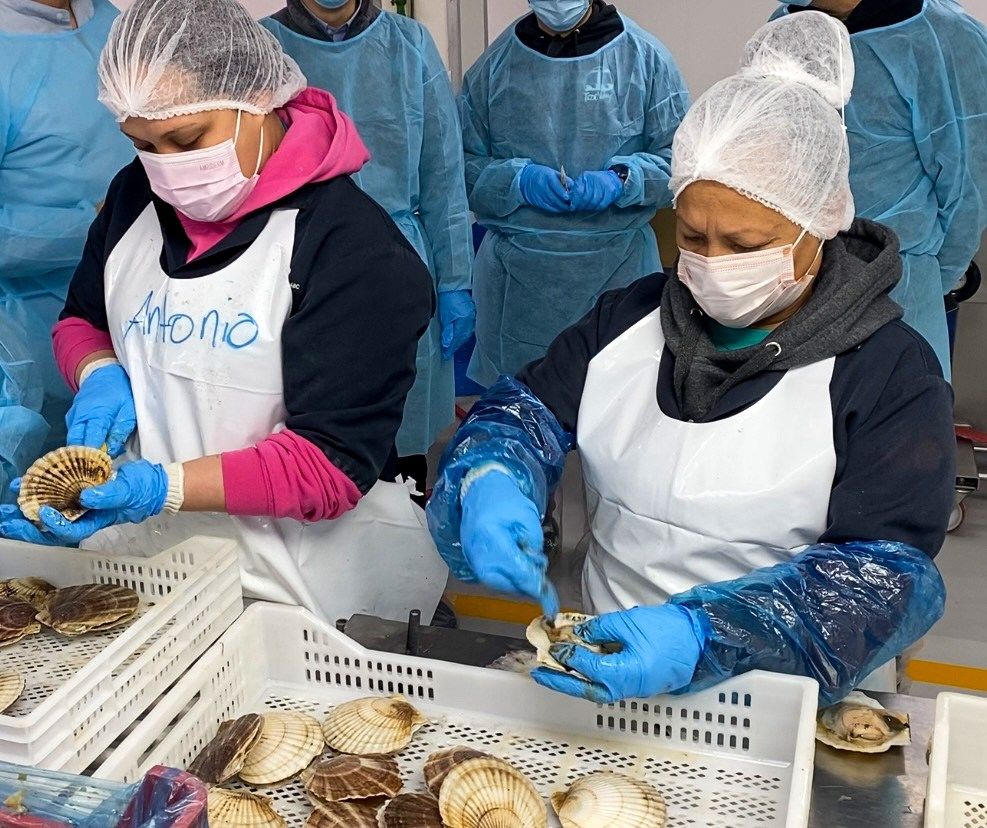
Seafood workers shuck Japanese scallops in February 2024 in Ensenada, Mexico. (Courtesy JETRO)
In a trial in February 2024, JETRO supplied three local businesses with frozen Japanese scallops and instructed them in shucking, sterilization, and packaging. In March, 14 Japanese seafood companies toured the region. Ishibashi Tsuyoshi, president of Miyagi-based seafood operator Hybrid Laboratory, said, “The area’s greatest potential is its ability to process and ship scallops quickly.”
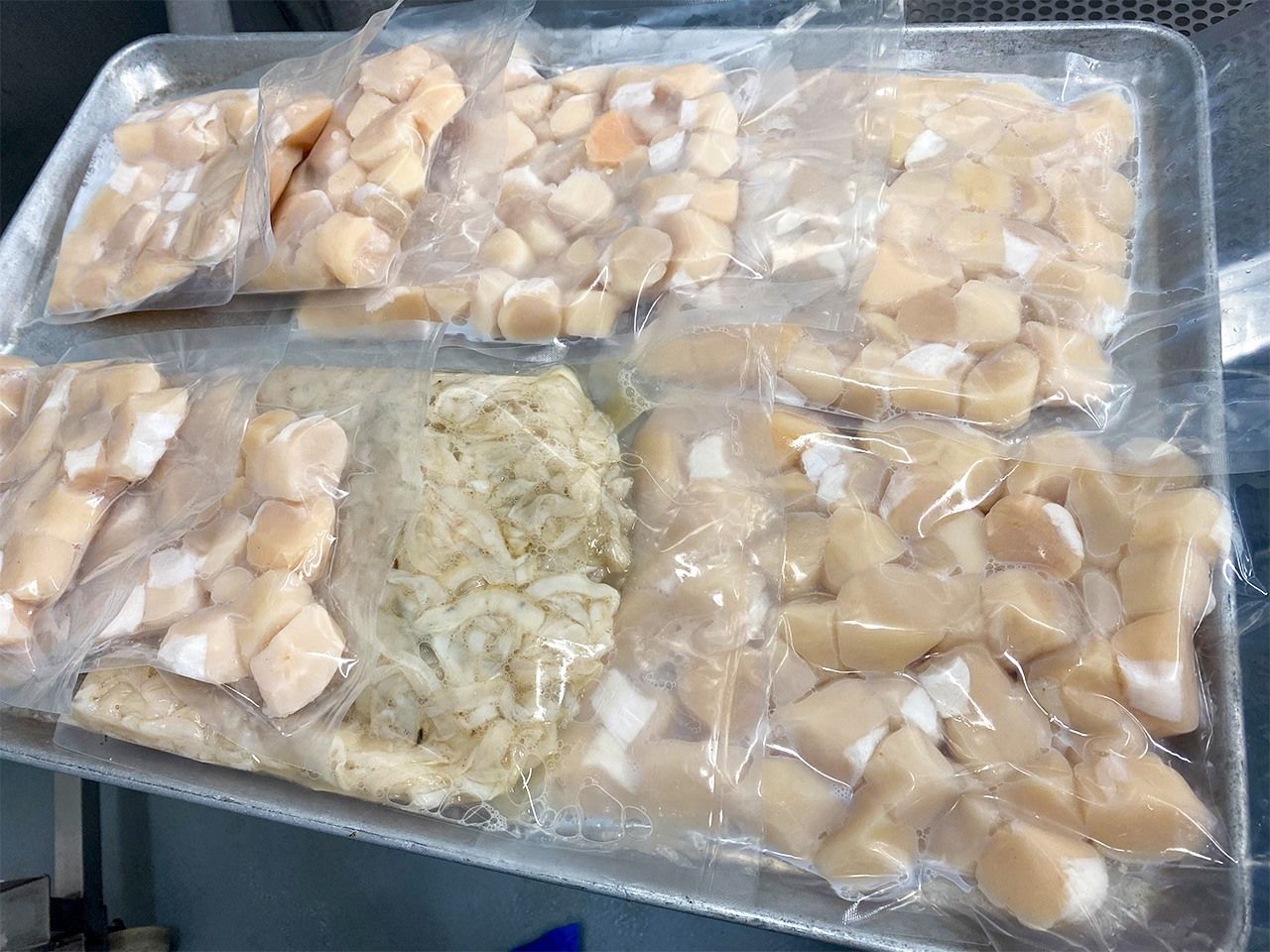
The first trial batch of Japanese scallops processed in Ensenada in February 2024. (Courtesy JETRO)
The Chinese operators that used to process Japanese scallops used a process known as wet packing, a method used commonly in the industry that involves the addition of sodium tripolyphosphate. While wet packing does make scallops softer, they also lose their color and sweetness, making them unsuitable for use in sushi or otherwise being consumed raw. The Mexican operation, however, does not wet pack scallops, rather sending them to the US chilled, so they can be eaten raw, achieving around double the price on the market. This enables the scallops to be targeted at not only budget restaurants but also high-end eateries and stores.
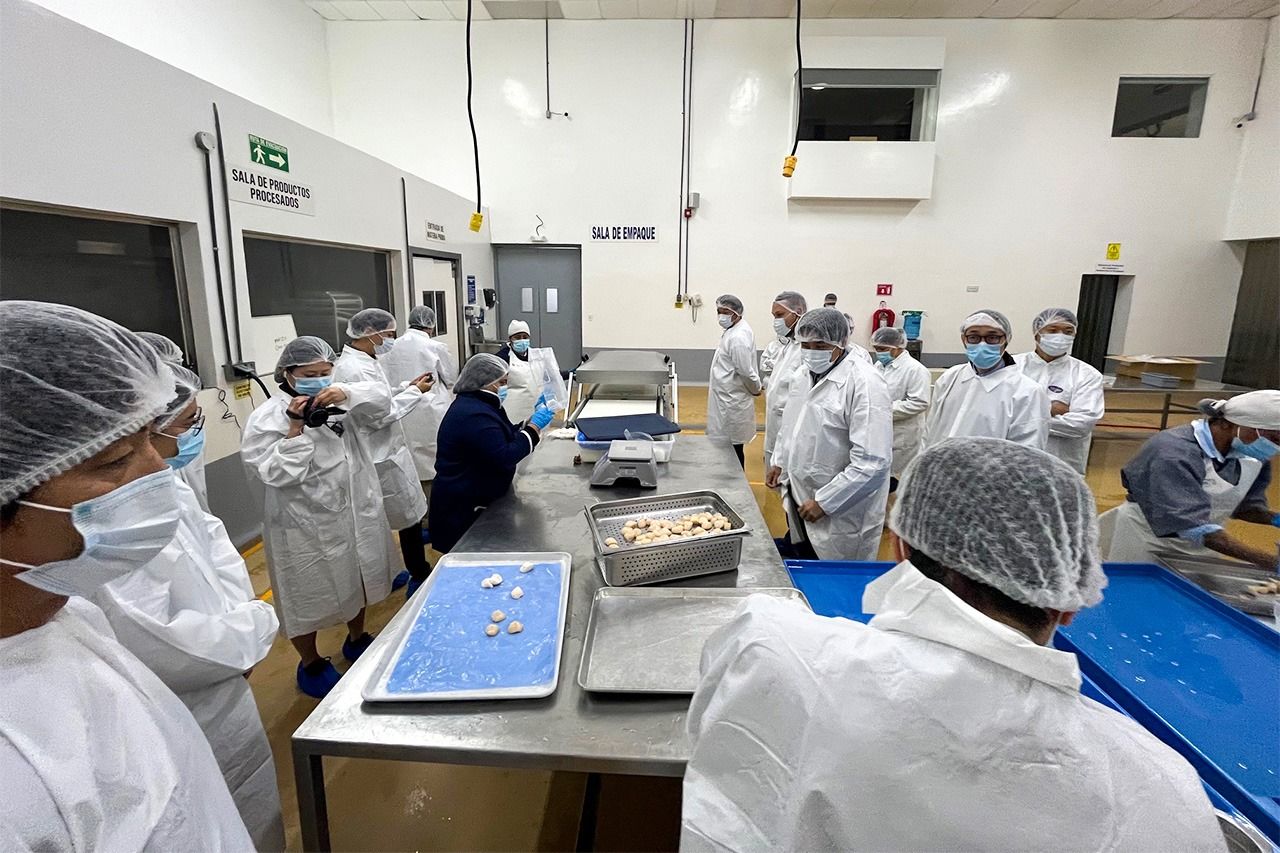
The Japanese seafood industry mission visits Ensenada, Mexico, in March 2024. (Courtesy JETRO)
Alma Rosa García Juárez, director of Ensenada’s aquaculture agency, recently visited Japan. In an interview with Nippon.com, she stated that “much of the seafood that is distributed in the United States is processed in Baja California, which has strong connections with US buyers.”
Suggesting that any new sale channel could expand in future, García Juárez also said that because Mexico also has a culture of eating seafood raw, “it is also possible for scallops processed in Ensenada to be consumed in Mexico.”
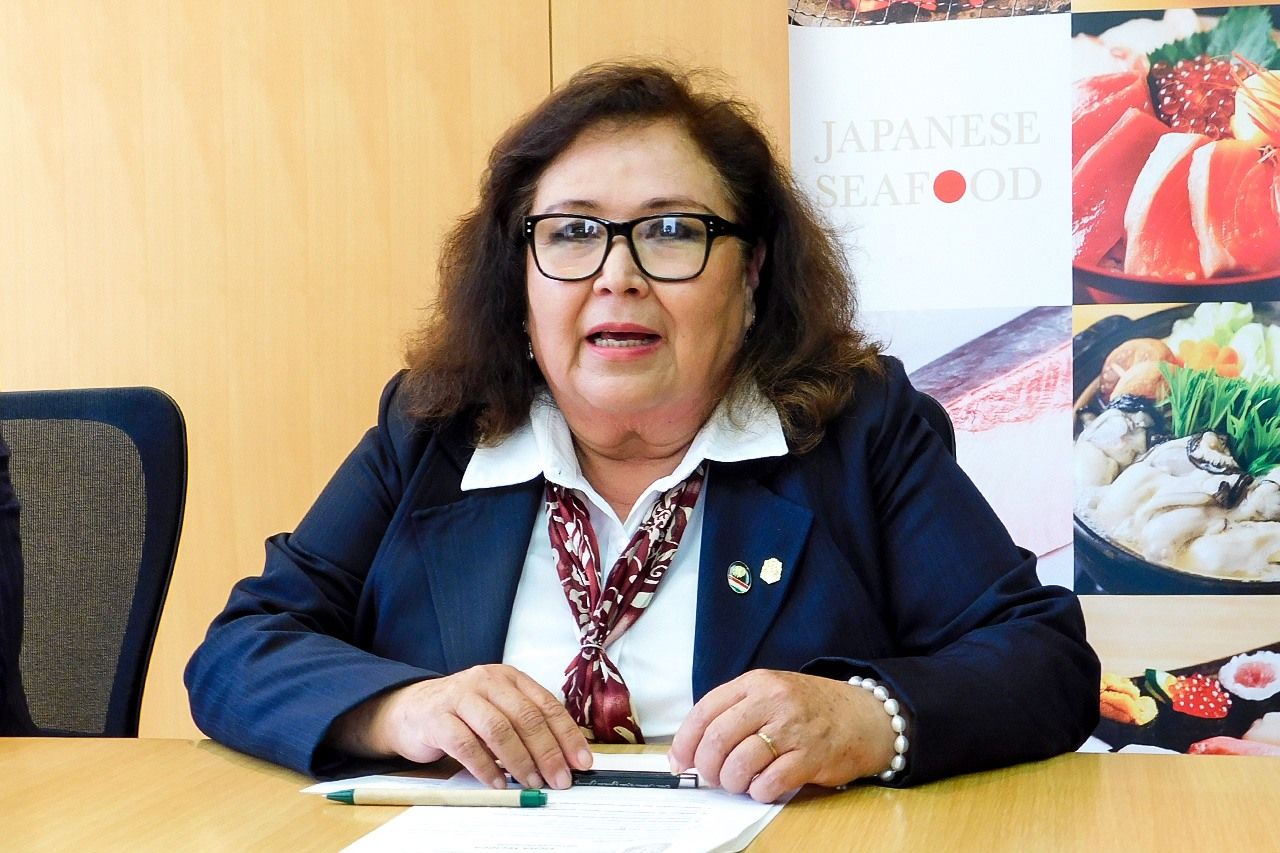
Baja California Fisheries and Aquaculture Minister Alma Rosa García Juárez being interviewed in Tokyo in June. (© Nippon.com)
Praise from US Buyers
Ensenada’s location enables fresh scallops to be trucked to Los Angeles and Las Vegas, both of which have high concentrations of sushi restaurants and other Japanese restaurants. According to JETRO’s US export platform, in 2022, California was home to 4,995 Japanese restaurants—more than any other state. Many of these are situated in Los Angeles, which has a large Japanese-American population as well as many Japanese expats, and is around five hours’ drive from Ensenada.
The Japanese businesses that participated in the March visit also attended a buyer event in Los Angeles. According to JETRO, upon sampling scallops processed in Ensenada just hours before, American buyers described them as sweet, fresh, and not fishy, with some buyers offering to invest in processing of scallops destined for consumption raw.
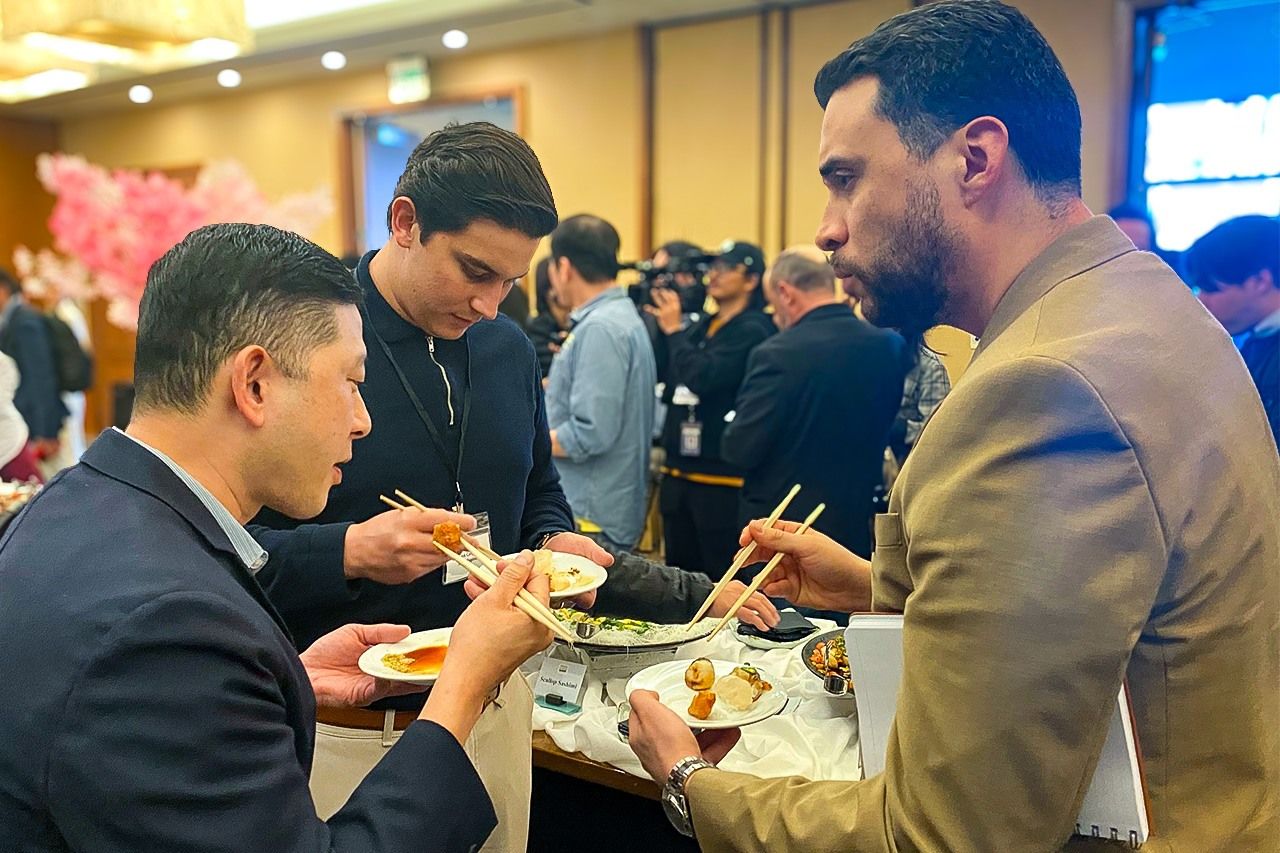
Buyers at a JETRO event in Los Angeles sample Japanese scallops in March 2024. (Courtesy JETRO)
However, the Mexican trial did identify a few issues. The local seafood processors lacked sufficient experience in scallop processing or expertise in storage of scallops, and their freezing facilities were insufficient. Ishibashi says that he believes that if quality can be improved by overcoming these issues, and relationships can be built with US buyers, it will enable the creation of a sound distribution channel.
JETRO Executive Vice President Nakazawa Katsunori says enthusiastically, “We are branding these scallops as hotate—the Japanese word for scallops—because we want hotate to become known in the United States as a safe and tasty Japanese seafood product, much like internationally recognized wagyū beef.”
One day, the word hotate might become part of English.
(Originally published in Japanese. Banner photo: Seafood workers shuck scallops in Ensenada, Mexico, in February. Courtesy JETRO.)

